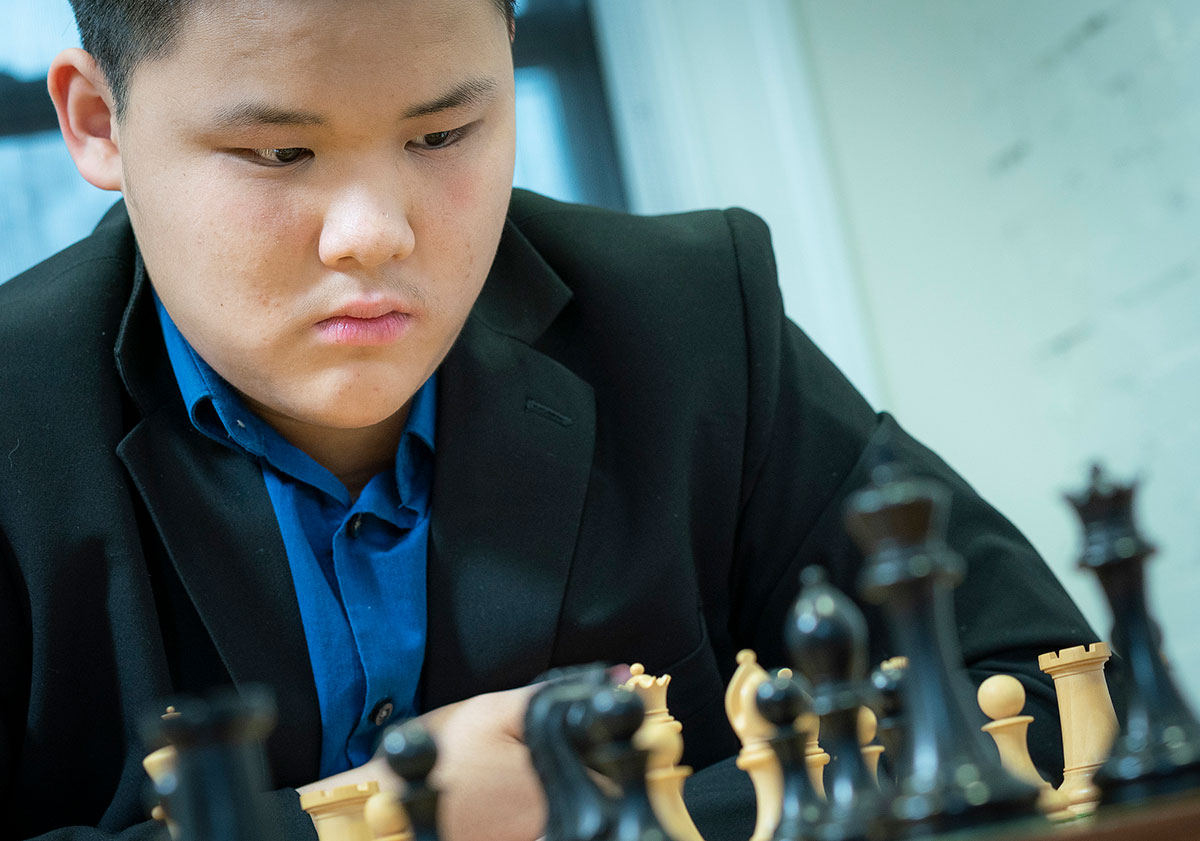


So let's start there! Conventional wisdoms says that all-women events tend to have a lower drawing percentage, and the first round of the U.S. Women's Championship could be offered as 'Exhibit A'. The results were more or less according to rating, except for Maggie Feng's upset (with Black!) of Tatev Abrahamyan who out-rates Feng by 178 Elo points.
Click or tap any result to open the game via live.chessbase.com or a name to reach the Playerbase
After having an edge in the middlegame with a "good knight vs bad bishop", Abrahamyan, who has been in the running for the U.S. Championship before but has never won, first allowed Feng to equalise and then drifted in a position where accurate play was required.
Abrahamyan had been treading water, to use an analogy, but the exchange of pawns on the kingside only served to increase the potential scope of Feng's previously walled-in bishop. Now Tatev seemingly 'got tired and drowned'. 38.♘f8+? ♚h6 39.♘g6 ♜f7! 40.♘f4 ♜f5 winning the h-pawn and the game.

Abrahamyan, the perennial number three seed | Photo: Justin Kellar / Saint Louis Chess Club
Video: Feng discusses the game with Maurice Ashley
It's quite rare nowadays to find a position, between strong players in a prestigious tournament like the US Championship, that has been played less than 200 times after just three moves! But that was the situation in Timur Gareyev vs Jeffrey Xiong in round one on Wednesday after Xiong's 3...♝g4:
This position was reached recently in Duda-Laznicka from the Prague Masters, where Duda played 4.♕b3 as in the majority of games thus far. Gareyev opted for the rarer 4.♘e5 and after 4...♝f5 5.e3 ♞f6 the players were already 'out of book'. But that's where things got hairy. Gareyev, after thinking for 20 minutes, tossed the grenade 6.g4?!
Apparently the best continuation is to first take 6...dxe3 7.fxe3, then 7...♝e4 8.♖g1 e6 9.♗b2 and Black is fine or slightly better, but it's complicated. Xiong played 6...♝e4 straight away and after 7.f3 ♝g6 Gareyev thought for a further 39 minutes on 8.♗b2, a time investment that woudl come back to bite him later. The position remained equal until move 20.
Jeffery Xiong's reaction to @timur_gareyev's insane opening play https://t.co/0bM9ZwZ8hj#USChessChamps pic.twitter.com/FTG3C17gmn
— US Chess (@USChess) March 20, 2019
The players traded rooks in a rather unusual manner 18...♛xh1 19.♕xh4 a5 and now Gareyev went awry: 20.♕f2 (20.♕g4 or O-O-O keeps the balance) axb4 21.axb4 ♜xa1+ 22.♗xa1 ♛e4 and Xiong's strong queen couple with Gareyev's overextended queenside pawns quickly gave Black a winning advantage.

Sink or swim?! | Photo: Lennart Ootes
Xiong: "I was also very confused most of the way"
Most of the other games were close throughout, save for the last game to finish — between Awonder Liang and Aleksandr Lenderman — which ended drawn only after 120 moves and many missed opportunities for both sides. For example:
Lenderman played 42...♜1c5 here, but 42...♜f1+ 43.♔e2 ♜b1 would win the b-pawn for nothing. Liang eventually traded the b-pawn for Black's a-pawn and his remaining passed pawn gave him counterplay that eventually lead to a draw.

Awonder what he's thinking? | Photo: Lennart Ootes
Click or tap any result to open the game via live.chessbase.com
Commentary by GM Yasser Seirawan, GM Maurice Ashley and WGM Jennifer Shahade